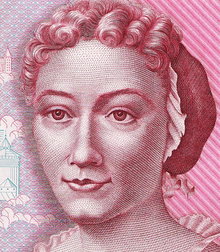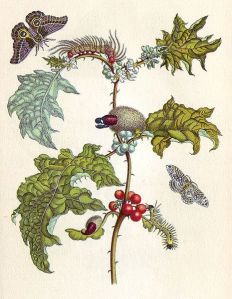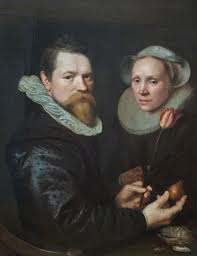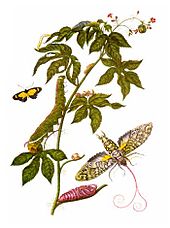Almost 350 years ago the city of Amsterdam was home to the world’s first multinational corporation, the Dutch East India Company, the city’s bourse was akin to today’s Wall Street and traders dealt in commodities such as tea, sugar, porcelain, opium and slaves. The city had newly acquired co-ownership of the South American colony of Suriname thus securing its interests in sugar and slaves. Along Amsterdam’s network of canals stood the grand homes of the wealthy burghers whose salons hummed with news of discoveries in science and exploration.
Yet it was also a centre of cultural production where Rembrandt and others less famous were hard at work in their studios. Amsterdam had a free press (printing works by radical philosophers like Spinoza and Descartes) and promoted religious and political tolerance (allowing Jews to build synagogues) making it a magnet for refugees from persecution elsewhere in Europe, this liberal atmosphere further allowed the economy to flourish. Amsterdam had money, power, style and street cred; yeah…it rocked!
This spectacular city, was at that time, also home to one Maria Sibylla Marian. If you had met her on a bridge over the Amstel and she asked you back to her place to “look at her etchings” you’d have been crazy to decline. Not only was she from a rich and powerful family (so the coffee would have been great) she was one of Europe’s finest botanical artists and international explorers so she’d have had a few good stories to entertain you with too.
Maria Sibylla was born in Frankfurt in 1647 into the Merian family, famous engravers and owners of the largest publishing house in 17th century Europe. In 1630 they had published the Merian Bible, hugely popular because it was this first Bible to include hand coloured engravings alongside the text.
It wasn’t quite the same as being born into the Murdoch empire but the Merians certainly had wealth and status. Her father died when she was just three and her mother re-married to the still-life painter Jacob Marrel who encouraged Maria to paint and draw.
As a young woman she was fascinated by insects, collecting them to draw. She began with silk worms but also collected other butterflies and moths, soon having a house full of insects in various stages of their life cycles. This might seem outlandish now but at that time it was downright dangerous because the caterpillar was associated with the devil, so a house-full of them could warrant burning at the stake (remember the height of witch-burning fever in Europe was the early 1600’s with significant trials continuing into 1700’s). Because of their association with evil very little was known about insects and it was generally believed that they spontaneously appeared from mud.
Merian’s research proved this was not the case and despite her reckless behaviour, her meticulous studies of the metamorphosis of the butterfly have made her one of the most significant contributors to etymology.
Audacious behaviour in the pursuit of art and science seems to have been the norm for Merian as she was also reputed to have stolen a tulip from a neighbour in order to study and draw it, relying on her family name to keep her out of trouble. At the height of the tulip craze in the late 1630’s a single tulip bulb could fetch a price equivalent to ten times the annual wage of a skilled craftsman but by the time of Merian’s theft speculation on the tulip market had caused their value to plummet to somewhere nearer to € 500 in today’s money. Never-the-less, the theft of a tulip was no small matter.
In 1665 Merian married her step-father Marrel’s apprentice, Johann Andreas Graff, with whom she had two children Johanna and Dorothea. During her marriage she continued to paint and draw and gave drawing lessons to the daughters of wealthy families. However, her marriage clearly did not satisfy her because within a few years she did the unthinkable and divorced her husband. It is likely that once again she was able to take such radical action largely on the strength of her family connections.
Following her divorce Merian relocated to Amsterdam with her two daughters and worked as a botanical artist publishing collections of engravings throughout the 1670’s and 80’s. Her publications describing the life-cycles of insects were very popular in wealthy circles because they were written in the vernacular (rather than the language of science: Latin) and thus enabled non-scientists to engage with the booming fashion for natural science.
On the strength of this work Merian was sponsored by the city of Amsterdam to travel to the new Dutch colony of Suriname in 1699 to study, collect and document the plants and animals. Scientific expeditions were at that time still rare and to receive state funding for such a venture was remarkable, all the more so because Merian was a woman. Her younger daughter Dorothea travelled with her for the two year duration of their journey before Maria succumbed to Malaria and the pair were forced to return to Europe in 1701. Upon her return Merian published a collection of her engravings about the insects of Suriname called Metamorphosis Insectorum Surinamensium.
In 1715 she suffered a debilitating stroke from which she never fully recovered. Although Merian continued to try to work she died just two years later (aged 69) and her daughter Dorothea published Erucarum Ortus Alimentum et Paradoxa Metamorphosis, a collection of her mother’s work, posthumously.
If not for her gender I’m sure the remarkable exploits and scientific contributions of Merian would be much more widely known. Her botanical drawings and engravings are at once skilfully and accurately rendered and exquisitely beautiful. May she be celebrated as a role model for nerd girls everywhere.












She was well known and loved in my German youth, you could buy calendars of her work, can’t wait to see you! Off to refugee rally in Melbourne now. Senior nerd Gisi
In research of pioneering, women explorers, I came across this well written article. I have no accumulated degrees or field experience in any sciences. I’m just a curious nerd at 58 yrs old with a personal passion to learn.
Thank you to all who corroborated in this wonderful article of a grand woman with whom I might have never known of.
And immense blessings to her descendants bearing her curiosity, creativity and courage.
Respectfully, Deborah LaRiccia Brown of Indiana USA (2015)